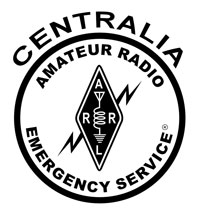 As October arrives, our ARES team once again ramps up for the “Mother Nature Picks On The Pacific Northwest” season. Training is switching from the wildfire preparations of summer to our fall flood response activities. It has been awhile since we’ve worked a good disaster exercise, so we decided to create one. During our October 7th training night, the team chose to design a 6.0 earthquake from a series of nine disaster scenarios that included floods, wildfires, wind storms and even a hurricane. The plan is to design a disaster selected by group consensus and then put that plan to the test during a field exercise on our October 21st training. We’ll debrief the exercise at our first November meeting and then create a better disaster.
As October arrives, our ARES team once again ramps up for the “Mother Nature Picks On The Pacific Northwest” season. Training is switching from the wildfire preparations of summer to our fall flood response activities. It has been awhile since we’ve worked a good disaster exercise, so we decided to create one. During our October 7th training night, the team chose to design a 6.0 earthquake from a series of nine disaster scenarios that included floods, wildfires, wind storms and even a hurricane. The plan is to design a disaster selected by group consensus and then put that plan to the test during a field exercise on our October 21st training. We’ll debrief the exercise at our first November meeting and then create a better disaster.
After deciding on an earthquake disaster, the next step was to list what kind of communications support would be required. The list of those we potentially needed to talk to included: police / fire department response teams, the Emergency Coordination Center (ECC), the State EOC, adjoining Lewis County ARES team and perhaps regions outside the disaster area via HF communications. Next the team determined possible support functions during and after an earthquake. These included: ARES Command, possible shelter comms, staffing the ECC, windshield survey teams, evacuation support and creating helicopter landing zones.
A general list of required response equipment was next. This included: personal HT’s and mobile radios, go-bags and safety equipment, both ARES communications vans, helicopter LZ equipment bags, map books, a portable generator and even making sure our hazardous material identification app was up to date on cell phones. A list of assignments included: radio operators, LZ teams, evacuation planning personnel, ARES communication van staff, including scribes, windshield survey teams, net control operators and an ARES command officer.
Finally, the team included a couple of possible “inserts” to be added if time allows. These would include 10 meter / 6 meter ground wave communication tests, UHF/VHF crossband tests on our local repeater, simplex relays using HT’s and even a minor medical response for an injured ARES team member. The ARES staff will refine this disaster scenario at our coffee meetings over the next two weeks and we should be ready to deal with a short – two hour – disaster exercise at our next meeting.
Our next ARES training session will be Monday, October 21st. We’ll begin the exercise with a “tone out” using our Telegram alert system. Team members will check into the net control and will be sent to the deployment area at the Mt. View Baptist Church. There, everyone will receive a short safety briefing, an incident action plan summary, and frequency / personnel assignments. We will check all our equipment and see if we can help save our community from this disaster. Even though this is a short field exercise, it will allow us to test critical response systems and short of a torrential downpour that evening, it should be fun. But perhaps our team member John, AD6KT, is right. His motto is “If it ain’t raining, it ain’t training”.

